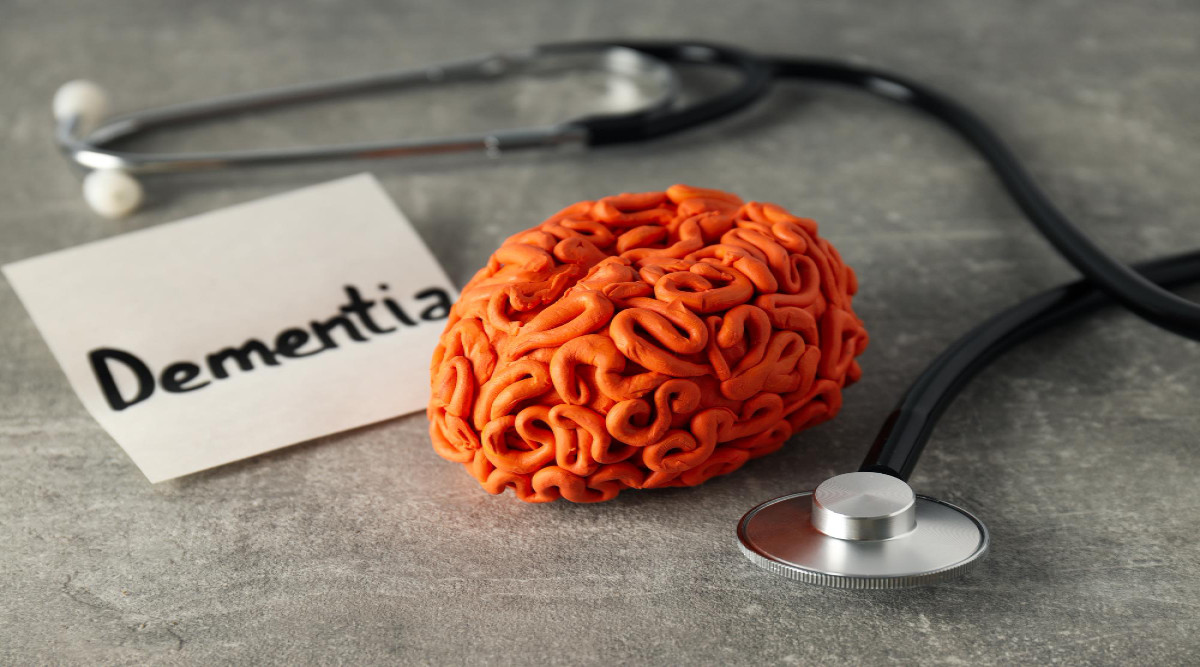
Learn what dementia is, common causes and symptoms, how doctors diagnose it, the main types (including Alzheimer’s disease), and whether dementia is curable. Clear, up-to-date guidance from DelonHealth
What is dementia?
Dementia is an umbrella term for conditions that cause a decline in memory, thinking, and behavior severe enough to interfere with daily life and independence. It becomes more common with age, but it is not a normal part of aging. The World Health Organization (WHO) defines dementia as a group of diseases that progressively impair cognitive abilities and daily functioning.
Clinicians typically diagnose dementia when cognitive changes are persistent and significant enough to disrupt social or occupational functioning (distinct from normal age-related forgetfulness and from mild cognitive impairment, or MCI).
Dementia vs. Alzheimer’s: what’s the difference?
Dementia describes a syndrome (a set of symptoms). Alzheimer’s disease (AD) is the most common cause of that syndrome. In other words, all Alzheimer’s is dementia, but not all dementia is Alzheimer’s. The U.S. National Institute on Aging (NIA) notes that Alzheimer’s is the leading cause of dementia in older adults. National Institute on Aging+1
Other major causes include vascular dementia, Lewy body dementia (LBD), and frontotemporal dementia (FTD). Many people have mixed dementia, with more than one process occurring at once (for example, Alzheimer’s plus vascular changes).
Common symptoms and early warning signs
Symptoms vary by person and by underlying cause, but often include:
- Memory problems: repeating questions, misplacing items, missing appointments
- Language difficulties: word-finding trouble, losing the thread in conversation
- Disorientation: losing track of dates, getting lost in familiar places
- Executive dysfunction: poorer judgment, problem solving, planning, or multitasking
- Behavior and mood changes: apathy, anxiety, irritability, depression
- Functional decline: difficulty managing finances, medications, cooking, or personal care
Some symptoms are cause-specific. In Lewy body dementia, for example, vivid visual hallucinations and changes in alertness can appear early, and Parkinson-like movement symptoms are common.
Tip: A single “bad day” can happen to anyone. Dementia is about progressive changes that persist and begin to limit independence. If you or a loved one notices a trend, it’s time to talk to a clinician.
What causes dementia?
1) Neurodegenerative diseases (most common)
- Alzheimer’s disease: abnormal accumulation of beta-amyloid plaques and tau tangles leads to progressive cell damage, typically starting with memory and learning areas.
- Lewy body dementia (LBD): deposits of alpha-synuclein (“Lewy bodies”) cause cognitive changes, hallucinations, fluctuations in attention, and Parkinsonism.
- Frontotemporal dementia (FTD): degeneration of the frontal and/or temporal lobes causes changes in behavior, personality, and language; often presents before age 60.
2) Vascular causes
Vascular dementia arises from conditions that impair blood flow to the brain such as stroke or small-vessel disease, leading to cognitive and behavioral changes. Risk factors mirror heart- and vessel-related risks (hypertension, diabetes, high cholesterol, smoking).
3) Mixed dementia
Many older adults have overlapping pathologies, for example, Alzheimer’s changes plus vascular injury. This can alter the symptom pattern and pace of decline.
4) Potentially reversible conditions (“dementia mimics”)
A smaller subset of conditions can mimic or worsen cognitive symptoms but are treatable, making evaluation essential. Examples include medication side effects (especially anticholinergics or sedatives), thyroid disease, vitamin B12 deficiency, depression, sleep disorders, and normal pressure hydrocephalus (NPH).
Risk factors you can and can’t change
- Not modifiable: age, family history, certain genetic variants (e.g., APOE-ε4)
- Modifiable: high blood pressure, diabetes, smoking, physical inactivity, social isolation, hearing loss, and poor diet. WHO’s evidence-based guidelines recommend addressing these to reduce the risk of cognitive decline and dementia.
Bottom line: You can’t change your age, but you can improve brain and vascular health. Managing blood pressure, staying active, treating hearing loss, and staying socially and mentally engaged all support cognitive resilience.
The main types of dementia
Alzheimer’s disease (AD)
- Hallmarks: gradual onset; early memory and learning problems; later language, visuospatial, and executive deficits
- Diagnosis: clinical history and cognitive testing; biomarker support (amyloid/tau in CSF or PET) in specialized settings; rule-out labs and imaging to exclude other causes
- Treatment: symptomatic therapies (cholinesterase inhibitors, memantine) and disease-modifying anti-amyloid antibodies for early AD (see “Is dementia curable?”).
Vascular dementia
- Hallmarks: stepwise or fluctuating decline; slowed processing; executive dysfunction; history of stroke or vascular risk
- Prevention/Treatment: aggressive control of cardiovascular risk factors; stroke prevention; cognitive rehabilitation strategies.
Lewy body dementia (LBD)
- Hallmarks: recurrent visual hallucinations, fluctuations in alertness, REM sleep behavior disorder, Parkinsonism; sensitivity to antipsychotic medications
- Care focus: cautious medication use; management of sleep, movement, and cognitive symptoms; caregiver education.
Frontotemporal dementia (FTD)
- Hallmarks: prominent changes in behavior, personality, or language; relatively younger onset (often 45–65)
- Care focus: tailored behavioral strategies, speech-language therapy, caregiver support; currently no approved disease-modifying drugs.
Other causes include Parkinson’s disease, dementia, Huntington’s disease, prion diseases (rare), and severe chronic alcoholism. A thorough clinical workup helps distinguish these.
How dementia is diagnosed
There’s no single “dementia blood test.” Diagnosis requires a stepwise evaluation:
- History & collateral information
- Clinicians review the person’s symptoms, time course, medical history, medications, mood/sleep, and daily function. Input from a family member or close friend is crucial to capturing functional changes.
- Cognitive screening
- Brief, standardized tests such as the MoCA (Montreal Cognitive Assessment) or MMSE (Mini-Mental State Examination) help detect and monitor impairment. The choice of tool depends on the setting and purpose.
- Laboratory tests
- Typical panels check for reversible contributors (e.g., thyroid function, vitamin B12, folate), metabolic issues, and infection if indicated.
- Brain imaging
- MRI or CT to assess strokes, tumors, NPH, and patterns of atrophy; specialized PET or CSF biomarkers may be used in select cases (e.g., suspected early Alzheimer’s).
- Differential diagnosis
- Clinicians distinguish dementia from delirium (sudden, fluctuating confusion, often due to acute illness or medications) and from primary psychiatric disorders. Accurate classification guides treatment and planning.
Alzheimer’s disease: where it fits in
Because Alzheimer’s is the leading cause of dementia in older adults, it deserves special mention:
- Course: gradual decline over years; memory impairment typically first, later affecting language, visuospatial skills, and executive function
- Biology: accumulation of beta-amyloid and tau proteins with neurodegeneration
- Treatment landscape: In addition to established symptomatic medications, the FDA has approved two anti-amyloid monoclonal antibodies, lecanemab (Leqembi) and donanemab (Kisunla), for early Alzheimer’s (mild cognitive impairment or mild dementia due to AD). These therapies do not cure Alzheimer’s but can slow cognitive and functional decline in carefully selected patients and require MRI monitoring for side effects like ARIA (brain swelling/bleeding).
Is dementia curable?
Short answer: No, most dementias are not yet curable.
However, some causes are treatable or partly reversible, and many symptoms can be managed to improve quality of life.
- Treatable contributors: thyroid disorders, vitamin B12 deficiency, medication effects, sleep apnea, depression, and normal pressure hydrocephalus, among others. Identifying and treating these can meaningfully help.
- Alzheimer’s disease: the new anti-amyloid therapies (lecanemab, donanemab) slow progression but are not cures; they are appropriate only for specific patients and require specialist oversight and monitoring
- Vascular dementia: while established injury isn’t reversible, preventing further vascular damage (controlling blood pressure, lipids, diabetes; quitting smoking; exercise) can slow worsening.
- FTD/LBD: no cures; care focuses on symptom control, safety, and support.
Living well with dementia: practical management
Even without a cure, a comprehensive plan can make a major difference:
- Medical management: treat underlying conditions; review medications for cognitive side effects; consider approved cognitive medications where appropriate (donepezil, rivastigmine, galantamine, memantine).
- Lifestyle & risk reduction: control cardiovascular risks; stay physically active; address hearing or vision problems; maintain social and cognitive engagement. WHO guidelines endorse these strategies for brain health.
- Daily structure & safety: routines for meals/medications, home safety checks (stove, fall risks), driving evaluations when needed.
- Rehabilitation & supports occupational therapy for function and safety; speech-language therapy for communication; memory aids; caregiver coaching.
- Behavioral symptoms: manage triggers (pain, infections, overstimulation); use non-drug strategies first; medications only when necessary and with caution—especially in LBD due to neuroleptic sensitivity.
- Planning ahead: discuss advance directives, financial and legal planning, and community resources early, while decision-making capacity is higher.
How doctors evaluate memory concerns (what to expect at an appointment)
- Interview & informant report (you and a family member)
- Brief cognitive testing (MoCA or MMSE)
- Physical exam & neurological check
- Lab tests to rule out reversible causes
- Imaging (MRI or CT) if indicated
- Next steps: a diagnosis (or working diagnosis), safety guidance, education, and follow-up plan.
FAQ
Is forgetfulness always dementia?
No. Normal aging includes slower recall, but daily function remains intact. Dementia involves progressive impairment that interferes with independence.
Can lifestyle changes prevent dementia entirely?
No guarantee, but addressing blood pressure, diabetes, smoking, hearing loss, inactivity, and social isolation reduces risk and supports brain health.
What about the new Alzheimer’s drugs I’ve heard about?
Lecanemab and donanemab are FDA-approved for early Alzheimer’s. They require careful selection, infusion visits, and MRI monitoring; they slow progression but do not cure the disease.
Are hallucinations a sign of Alzheimer’s?
They can occur, but persistent, vivid visual hallucinations are a hallmark of Lewy body dementia, especially early.
What’s the difference between delirium and dementia?
Delirium is an acute, fluctuating change in attention and cognition, often triggered by infection, medications, or hospitalization. Dementia is chronic and progressive. A clinician can evaluate for both.
When to see a healthcare professional
- You or loved ones notice progressive memory, language, or judgment problems
- New confusion after illness, new medication, or hospitalization
- Trouble managing finances, medications, or personal care
- Changes in behavior, personality, or safety (e.g., wandering, falls)
Early evaluation helps identify reversible contributors, start appropriate treatments, plan support, and connect you with resources.
The DelonHealth perspective
Navigating dementia is challenging for patients, families, and care teams. At DelonHealth, we support clinicians’ work by ensuring accurate, compliant medical billing and streamlined practice workflows for cognitive care, geriatrics, neurology, and mental health services so providers can spend more time with patients and caregivers. If your practice needs help optimizing billing for cognitive evaluation and management services, we’re here to help.
This article is for education only and isn’t a substitute for professional medical advice. If you’re concerned about memory or thinking changes, please consult a qualified clinician.









